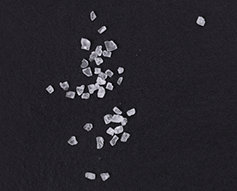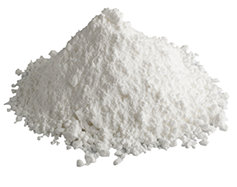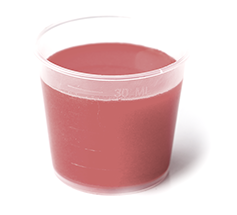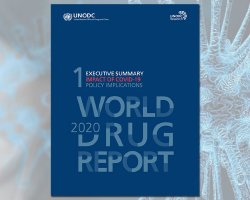
The Drugs Most Likely to Appear in an Overdose
If there is one thing that we can be absolutely certain of when it comes to drug and alcohol addiction in the United States, it is that we are far worse off with this problem than we were twenty years ago. Drug abuse and alcohol misuse are both health issues and societal concerns that have grown significantly since the turn-of-the-century. What is truly distressing about these types of problems is that, no matter what we as a nation or as a unified people or even just as families try to do to reduce the problem, it only seems to grow.
The Most Lethal Drugs in Use in the United States Today
Listed below are the top, most lethal drugs that Americans are experimenting with now. Parents should note them down, they should do further research on them, and they should educate their kids, their family members, and their loved ones about them. From a perspective of priority, the following drugs are the ones that we need to address first:

- Fentanyl. Fentanyl is a high strength opioid pain reliever. Depending on the dosage, fentanyl can be anywhere from ten to fifty times more potent than heroin, and anywhere from fifty to one-hundred times more potent than morphine is. It is the most powerful, addictive, and potentially lethal opioid pharmaceutical pain reliever in use in the United States today. In fact, fentanyl is so potent and so potentially lethal that it was initially only created to help extremely pained cancer patients. And what’s more, this drug was initially only approved for use in inpatient settings. However, somewhere along the way, the makers of fentanyl all persuaded the Food and Drug Administration to allow the drug for use in outpatient settings, as long it was only prescribed by doctors who had a special license to prescribe it. In 2016, more than half of all opioid overdose deaths were traced back to fentanyl, whether the victims died from straight fentanyl or from fentanyl mixed with something else.

- Heroin. Next up is heroin. Heroin has been around for hundreds of years in one form or another. This is not a new drug, but it is making a relatively new comeback in the United States. Heroin was causing overdose deaths on near-epidemic proportions in the United States in the 1970s and 1980s. After massive efforts by the Drug Enforcement Administration, heroin addiction statistics finally started to recede in the 1990s and early 2000s. But when middle-class America started getting addicted to opioids pharmaceuticals at a mad rate, interest in heroin came back. Painkiller addicts started opting for heroin when they could not get a hold of painkillers. Heroin is extremely dangerous because by itself it is highly addictive and toxic, and since users buy it on the street, they never really know how much they are getting, how potent it is, or what else might be sliced into the drug.

- Methadone. Methadone is perhaps the most covert drug in the United States. Methadone is marketed as a “medication-assisted therapy” drug. This means that methadone is a medicine that is supposed to be used to help people come down off of other drugs. The entire concept behind the medication-assisted therapy is somewhat flawed, as it doesn’t really make sense to use drugs to help people get off of drugs. However, methadone takes the cake in the nonsensical aspect of this approach. Methadone is touted as being a miracle drug that is supposed to help people come down off of other drugs, but methadone by itself is highly addictive and habit-forming. Furthermore, most opioid addicts who are put on methadone are put on a maintenance program, where they have to continue taking methadone, sometimes indefinitely. Methadone is also quite unlike other drugs in one key phenomenon for how it interacts on the human body. While most drugs work their way into a person’s fatty tissues and reside there, Methadone chemicals break down into extremely small particles and lodge themselves in the bone marrow of a person’s body. Once there, it becomes extremely difficult to detox a person off of methadone.
These are just the top three most addictive drugs in the United States. There are dozens more that are also extremely addictive and life-threatening. People should absolutely stay away from drugs at whatever cost, and if they do fall prey to the drug habit, they need to enter into a drug and alcohol addiction treatment center and seek help there.
Two Methods for Reducing Overdose Statistics Immediately
When we hear about the opioid problem, we always hear the same old story from the medical experts, talking about, “Getting the prescription just right” about, “Using ’tamper-resistant’ painkillers” about, “Ensuring patients are not doctor-shopping” etc. It’s the same old story, repeated over and over again until we’re all tired of hearing it.
What about a completely different approach to reducing overdoses on opioids? What about taking a step in an entirely different direction? Listed below are two totally unique methods we could start implementing today that would guarantee a reduction in opioid overdose deaths:
Create Alternatives to Opioid Pain Relievers
The American people have been successfully convinced that we “need” opioid painkillers to help us with our pain. However, we really do not need these drugs that much. In fact, the majority of pain phenomena that opioids are prescribed for are back pain, headaches, and teeth/jaw pain. However, high-strength painkillers that cause millions to become addicted and thousands to die from overdoses annually are not even intended to address such pain phenomena! We need real solutions to pain, solutions that not only remedy the pain but which also do not pose such extreme risk for addiction and dependence in tandem. If we can direct our nation’s pain patients away from a reliance on opioid pharmaceuticals and towards, instead, a use of natural and holistic alternatives to pain relievers, we will be far better off.
Create a Better Social Health Condition
How is it that the United States has one of the most advanced medical systems in the country, yet also one of the highest overdose rates per capita? And why are so many Americans turning to drugs and alcohol, to begin with? In truth, Americans do not have the best quality of living or happiness ranking, especially when we consider all the other areas that the U.S. excels at. In fact, the U.S. barely scores in the top twenty list for life expectancy, and the nation is barely in the top fifty for overall happiness ranking. The U.S. puts far too much attention on economic growth, on getting a bigger paycheck, on cars, houses, private schools, and lower taxes, and the nation puts less attention on health, happiness, free time, quality of living, etc. We need to change this just by pursuing alternatives to opioid pain relievers and just by creating a better social health condition in the United States in general (which we should be doing anyway), we would dramatically reduce the numbers of Americans who die from opioid drug overdoses every year
In the words of Acting Director of the Centers for Disease Control and Prevention, Dr. Anne Schuchat:
“It took us twenty years to get into this bad of a condition with the opioid epidemic. We are not going to come out of it overnight.”

“It took us twenty years to get into this bad of a condition with the opioid epidemic. We are not going to come out of it overnight.”
Those words are certainly true. It is going to be some time before we fully free our nation from the opioid epidemic that we are stricken in. But we have to start somewhere.
Sources:


 ®
®